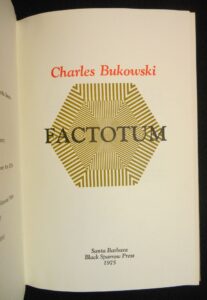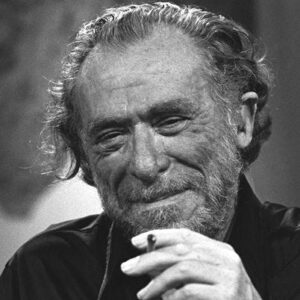
Factotum
By Charles Bukowski
208 pages
Originally published Jan. 1, 1975
Factotum was one of three books the Mules read for our mid-July meeting at the Cigar Club. A semi-autobiographical novel about a wannabe writer and drunk, it is outside of the sorts of books our members enjoy reading, so I was surprised by the recommendation.
The Plot
Henry Chinaski roams around from one fleabag hotel and city to another, barely understanding what is going on while attempting to support himself through mindless, poorly paid jobs. (Chinaski is Bukowski’s alter-ego. The character appears in five of his novels.)
There’s lots of drinking, smoking, and foul language, but there is virtually no forward movement among the characters. Still, I would recommend this book to anyone that hasn’t read Bukowski and to anyone that wanted to understand American prose in modern times.
What I Liked About It
Bukowski’s prose. I’m a big fan of Hemingway. And I liked the way Bukowski takes Hem’s terseness and directness even farther… probably as far as prose can go while still retaining some poetic vibration.
What I Didn’t Like So Much
Having to vicariously live the life of Henry Chinaski. This isn’t a fault of the story. Nor of Bukowski’s imagination. He wants the reader to live in that depressing, boring, unredeemable world in order to show him the little glints of light. But it’s viscerally uncomfortable.
About Charles Bukowski

Charles Bukowski (1920-1994)
Charles Bukowski was born in Germany. When he was three, the family moved to the US.
As a struggling writer, he worked a wide range of jobs, including dishwasher, truck driver and loader, mail carrier, guard, gas station attendant, stock boy, warehouse worker, shipping clerk, post office clerk, parking lot attendant, Red Cross orderly, and elevator operator. He also worked in a dog biscuit factory, a slaughterhouse, a cake and cookie factory, and he hung posters in New York City subways.
His writing often featured a depraved metropolitan environment, downtrodden members of American society, direct language, violence, and sexual imagery. His first book of poetry was published in 1959. He went on to publish more than forty-five books of poetry and prose. (Source: Poets.org)
 MarkFord
MarkFord